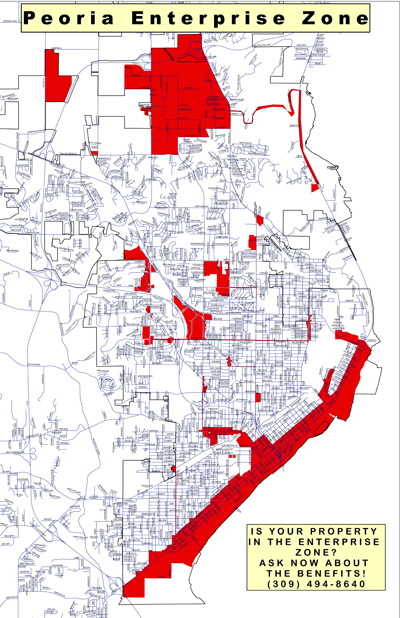I stopped blogging for several years shortly after the big Wonderful Development opened downtown. You may recall that they remodeled the Pere Marquette, opened the new Courtyard Marriott, and had plans to put in restaurants and bars and retail, and oh, goodness, that block was going to be hopping! And the best part was, it wasn’t going to cost taxpayers a thing because, “It pays for itself,” an exuberant Mayor Ardis said at the time.
As it turns out, not one restaurant, bar, or retail shop has ever opened in the storefronts along Monroe. In fact, the interior was never even finished; it still looks like a construction site inside. Taxpayers lost the $7 million loan and is saddled with ongoing lawsuits with developer Gary Matthews. And since the pandemic, the Courtyard has been closed, ostensibly due to low demand.
But no worries. It turns out that what downtown really needs to start bustling like it’s 1939 again is — wait for it — another hotel! Yes. The Peoria City Council has just approved another redevelopment agreement with another hotel developer that’s promising 70% occupancy, a national flag (this time it will be a Hilton Garden Inn), a restaurant/bar, and a convenience store. And it won’t cost taxpayers anything. It’s risk-free!
The new hotel is planned for Adams street, across the street from the new OSF Health Care corporate headquarters, in place of the former Sully’s bar and the former downtown Illinois Central College campus (also known as the Perley building). Plans call for the two properties to be razed to make way for the new development. Incidentally, artists’ renderings show Fulton Plaza replaced with two-way vehicular traffic again, but there’s nothing in the redevelopment agreement about it.
Oh, and it’s absolutely, positively, nothing at all like that Wonderful Development from a decade or so ago. Everybody says so: the developer, the developer’s attorney, various other people with a vested interest in the project, and the City Manager.
They have a point. There are many differences. This project includes apartments on the upper floors in addition to hotel rooms on the lower floors. That’s a new twist. The City isn’t loaning $7 million from underfunded pension funds this time. That’s a plus. They’re also not handing $33 million to the developer up front (backed by municipal bonds that we’re still on the hook to pay off), although they swore that was an awesome idea the last time. But hey, we all make multi-million-dollar mistakes with other people’s money now and then. Can’t remain bitter about that forever, am I right?
But on the other hand, there are a lot of similarities. It’s highly debatable that we need more hotel rooms downtown. As mentioned, one entire hotel downtown is still closed–try to book a room in the Courtyard. The occupancy predictions presented at the council meeting tonight (brought to you by Hotel & Leisure Advisors, a consultant for the hotel industry who reportedly did the feasibility study for this project) are unrealistically high, just like they were for the Wonderful Development. They’re also promising a new restaurant and retail, just like they did with the last hotel project, but which never materialized.
And there’s one more similarity worth mentioning: This does come with a cost to taxpayers. This hotel will be in the Downtown Conservation TIF (tax increment financing district), and the City has promised to pay the developer up to 100% of the redevelopment costs out of the increase in taxes attributable to the project site. That’s money that otherwise would go to other taxing districts, such as the County, District 150, the Park District, ICC, etc. That means taxpayers like you and me will have to take up the slack.
This also means the new hotel will be competing with the Pere Marquette and (still shuttered) Courtyard Marriott. The $33 million in bonds to build those hotels is supposed to get paid back out of revenues from those hotels. If revenue goes down due to increased competition for an (I would argue) over-supply of hotel rooms, then the bond repayment has to be made up from taxpayers like you and me. You can’t stop a private developer from building another hotel (that’s capitalism), but you don’t have to give them a sweetheart TIF deal that will likely harm your other investments, either.
True to form, however, the deal was sealed before the Council ever met, and it passed unanimously tonight. That’s okay. We’re finally going to get downtown moving again, just like we were promised with the Pere Marquette renovation. And the Civic Center expansion. And the museum. And the new Cat headquarters. And One Technology Plaza. And Riverfront Village. And….


